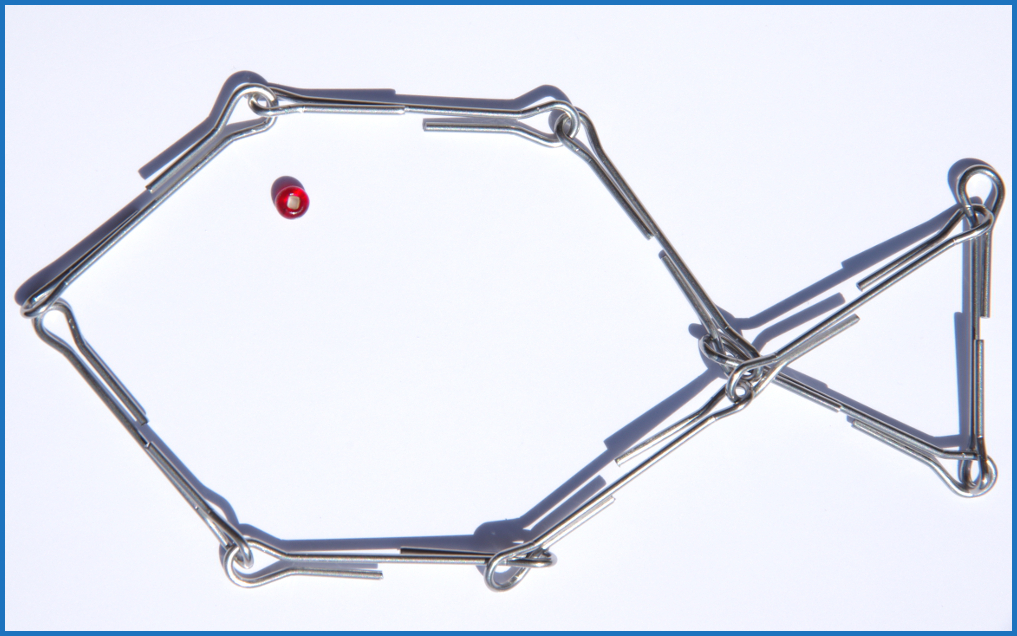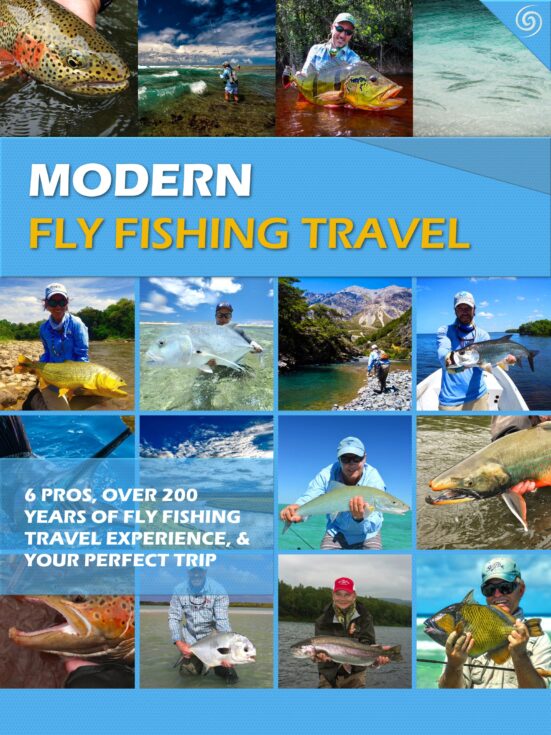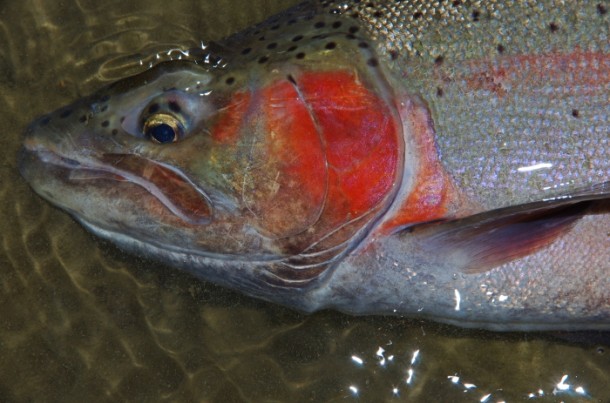Articulated streamers, or articulated flies in general, are decades old. However, articulated streamers have really become hugely popular within the last ten years. Everything seems to be articulated these days, although I still haven’t seen many articulated dry flies out there (LaFontaine’s Flex series is the exception). Streamers and other large predator flies, on the other hand, have become as serpentine as ever. I can barely hold on to them sometimes in my hand, as they seem to want to go off and slither into the grass. This is good news for fly anglers and has given us a ton of options on our predator flies. If you’re interested in articulated things, then read on and discover the different types of articulation and the options you have for making this articulation on your articulated streamers.
DIFFERENT TYPES OF ARTICULATED STREAMERS: MULTIPLE ARTICULATED SHANKS
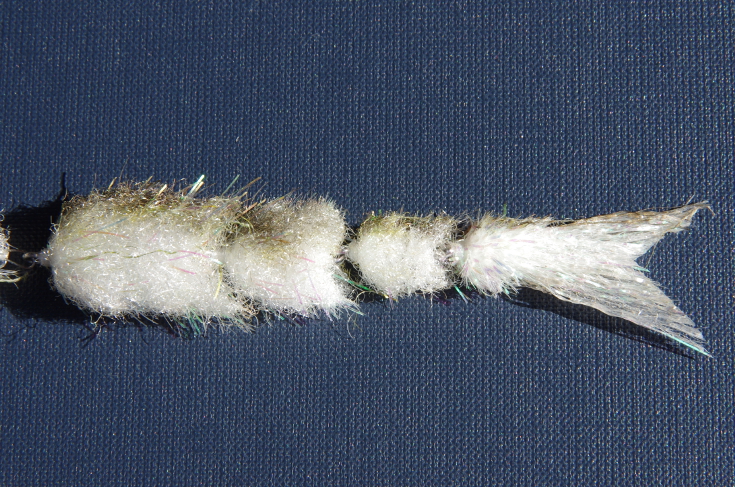 There are two main types of articulation: multiple articulated shanks (MAS) and single point of articulation (SPA). Most articulated streamers have single point of articulation but more and more patterns are emerging with MAS. MAS comes, more or less, from the mind of Blane Chocklett and began with his musky flies and his observation of fish physiology, particularly in how this is related to movement. From here, Chocklett developed his musky flies and his game changer fly, which is being altered and adapted by lots of other anglers now. Because of Chocklett, the game has changed a bit, but not necessarily because of one fly. By using multiple shanks, you can achieve movements in articulated streamers that are not possible with one or two shanks. Will this replace all other articulated streamer patterns or all other streamer patterns in general? Absolutely not—just as articulated shanks have not replaced single-shanked patterns. Each style gives you options and flexibility with hook placement and fly proportion, which you can use with the presentation that you need for the given conditions. What you gain with MPS is unparalleled serpentine movement, twisting in your fly patterns on change of direction, lack of general rigidity, and unique triggers that happen more often during the retrieve than with other patterns because of the constant movement of the pattern.
There are two main types of articulation: multiple articulated shanks (MAS) and single point of articulation (SPA). Most articulated streamers have single point of articulation but more and more patterns are emerging with MAS. MAS comes, more or less, from the mind of Blane Chocklett and began with his musky flies and his observation of fish physiology, particularly in how this is related to movement. From here, Chocklett developed his musky flies and his game changer fly, which is being altered and adapted by lots of other anglers now. Because of Chocklett, the game has changed a bit, but not necessarily because of one fly. By using multiple shanks, you can achieve movements in articulated streamers that are not possible with one or two shanks. Will this replace all other articulated streamer patterns or all other streamer patterns in general? Absolutely not—just as articulated shanks have not replaced single-shanked patterns. Each style gives you options and flexibility with hook placement and fly proportion, which you can use with the presentation that you need for the given conditions. What you gain with MPS is unparalleled serpentine movement, twisting in your fly patterns on change of direction, lack of general rigidity, and unique triggers that happen more often during the retrieve than with other patterns because of the constant movement of the pattern.
As far as constructing MAS patterns, articulated shanks are not the only way but are by far and away the best option. You can get multiple shank sizes and can choose whether or not you want big game versions. When you have chosen your version of articulated shank, depending on the fish species, you can choose to have two, three, four or more points of articulation. You can then incorporate hooks at various points of articulation by using the material and techniques described below. As an example, you may want to add a hook on the end as a stinger hook to lessen the effect of short-strikes. Blane Chocklett will often use only one hook for his musky flies, positioned after the first segment of the fly, that is, right after the head of the fly. He does this to avoid having multiple hooks in the mouth of a musky while still positioning the hook far enough toward the back. These are only examples, so add hooks where you find them most effective for your predator and streamer fishing.

ARTICULATED SHANKS CAN PRODUCE INCREDIBLE ACTION IN YOUR ARTICULATED STREAMERS.
DIFFERENT TYPES OF ARTICULATED STREAMERS: SINGLE POINT OF ARTICULATION
The second major type of articulation is the single point of articulation. It’s safe to say that Kelly Galloup and other tyers in the same region, like Russ Madden and Bob Linsenman, popularized articulated streamers. These articulated streamers were invariably single-point-articulation. The rise of articulated streamers has given us a ton of versatility and has provided us with huge advancements in action, particularly on the pause. All of the kicks, jolts, and flips we get from articulated streamers are only very rarely possible with flies without articulation (many of Bob Popovics’ bucktail patterns excluded). Another improvement was the addition of multiple hooks and the ability to make patterns quite large while limiting short strikes with the addition of these multiple hooks. This base was the starting point for what Blane Chocklett has taken to its logical evolution but not replacement.
SHANKS WITH SPA
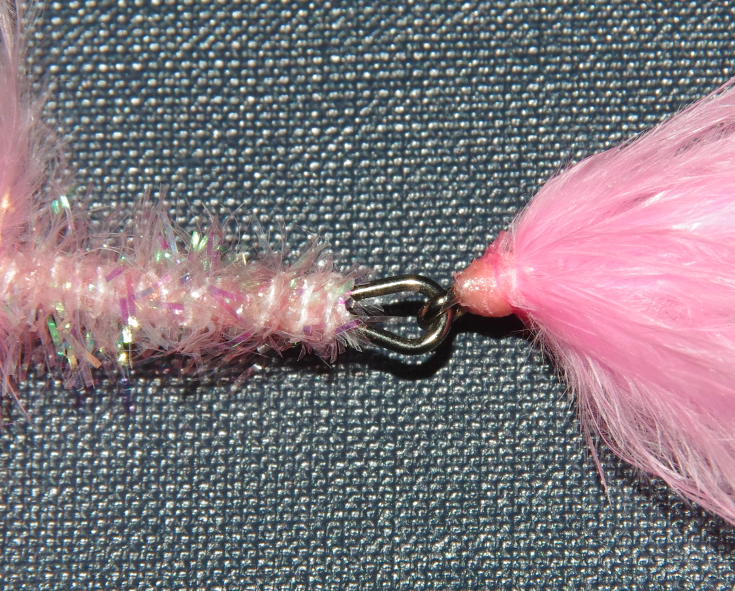 When it comes to making one point of articulation for articulated streamers, there are probably at least a dozen ways to do this. I should also note right away that I do not consider stinger style streamers articulated. This includes flies like the Sculpzilla, Loop Leech, and the traditionally-tide Dolly Llama, nor do I consider leeches tied on bead chain to be articulated. Moving on from these, in actuality, there are really only two common “ways” but many different materials for creating the articulation. The first and easiest way to create articulation is to use a shank, such as a Waddington or Chocklett’s Big Game shank. This has a fixed metal loop, and you can simply slide your back hook onto this and seal it with thread wraps. It is super easy and really effective. The only possible downside is the inability to add beads to keep the back hook from fouling, although normally the construction of the particular shank can at times impede fouling naturally.
When it comes to making one point of articulation for articulated streamers, there are probably at least a dozen ways to do this. I should also note right away that I do not consider stinger style streamers articulated. This includes flies like the Sculpzilla, Loop Leech, and the traditionally-tide Dolly Llama, nor do I consider leeches tied on bead chain to be articulated. Moving on from these, in actuality, there are really only two common “ways” but many different materials for creating the articulation. The first and easiest way to create articulation is to use a shank, such as a Waddington or Chocklett’s Big Game shank. This has a fixed metal loop, and you can simply slide your back hook onto this and seal it with thread wraps. It is super easy and really effective. The only possible downside is the inability to add beads to keep the back hook from fouling, although normally the construction of the particular shank can at times impede fouling naturally.
BENDING AND TYING IN A MATERIAL WITH SPA
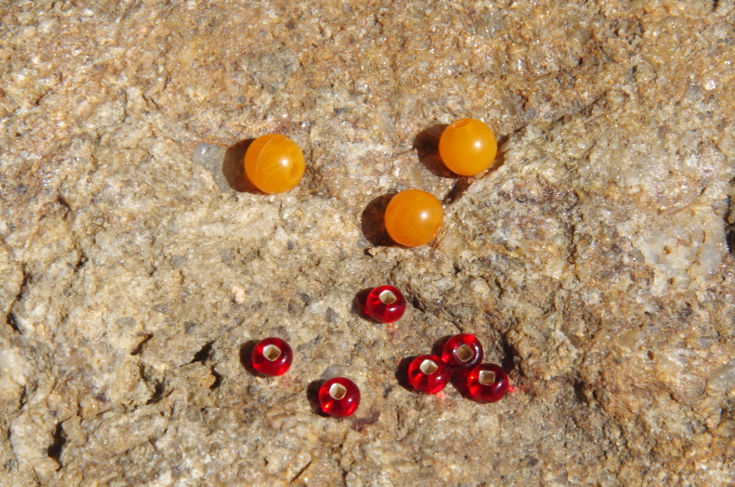 The other main way is to add a thin material onto the front hook, fold it into a loop, and then tie it down. In most cases, you will add beads to both of the folded pieces of material to keep the back hook from fouling. The two main options with beads are using four to five smaller size 6/0 craft beads or two to three larger size 6mm beads. Mike Schmidt, streamer tyer extraordinaire, uses 2 6mm beads on flies six inches and under and three 6mm beads on flies larger than six inches. Try both options to see what you like the best. As far as colors, use whatever you like. I will at times use mostly red or clear with some of my smaller beads, since these colors look natural on most patterns.
The other main way is to add a thin material onto the front hook, fold it into a loop, and then tie it down. In most cases, you will add beads to both of the folded pieces of material to keep the back hook from fouling. The two main options with beads are using four to five smaller size 6/0 craft beads or two to three larger size 6mm beads. Mike Schmidt, streamer tyer extraordinaire, uses 2 6mm beads on flies six inches and under and three 6mm beads on flies larger than six inches. Try both options to see what you like the best. As far as colors, use whatever you like. I will at times use mostly red or clear with some of my smaller beads, since these colors look natural on most patterns.
There are lots of materials that you can use for your articulated streamers. The first question you need to ask is whether or not a hook will be attached to the rear portion of your fly. If there is not going to be a hook, then you might be able to get away with using string cheese. Maybe not, but you don’t need to use any sort of kryptonite alloy to keep that back section on, since no fish of a life time will be attached to this. This may be necessary in places like Alaska and New York where you can only have one hook in parts of the state. If you are going to have a hook on the rear portion of your fly, then you need to use a strong enough material to hold any fish you may hook.
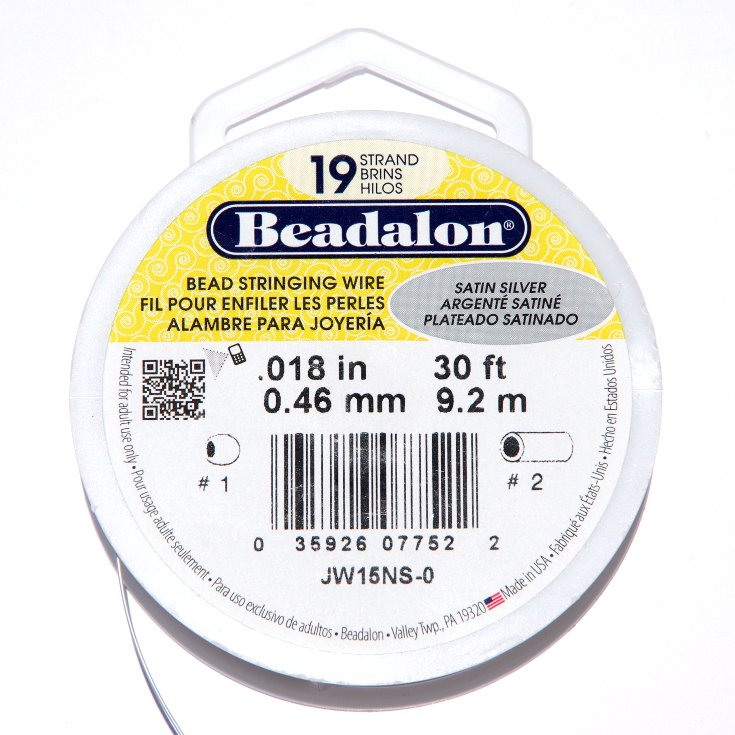
BEADALON HAS BEEN A STANDARD FOR MANY STREAMER EXPERTS.
There are three main factors you need to consider when you choose your material: strength, diameter, and stiffness. Of these three, the requirements for diameter are the easiest to understand, make sure that the diameter is small enough to fit into the rear hook well enough to allow it to swing freely. Strength is also straight forward; you want the material to be as strong as possible—pretty clear requirement here. Now for the most, dare I say, controversial factor, stiffness. A moderate amount of stiffness is almost always desired to keep the rear fly, as Mike Schmidt says it, “in plain”. If the material is too limp, your rear section will lag behind, and this can cause a host of problems. The more debated question is how stiff you want your material to be for reasons of action. I prefer to have a material that is as stiff as possible. I arrived at this conclusion after Pat Kelly of Mad River Outfitters used the hinge analogy to demonstrate that when you have two rigid materials, each one will move more easily by not transferring energy into a less rigid material, just like with a door hinge. In this way, you will have a much more prominent hinging effect on your articulated streamers. Experiment for yourself to see what gives you the action you want, though. Incidentally, both Mike Schmidt and Kelly Galloup (unless he has changed) use a material called Beadalon. Schmidt recommends using 19 strand .018 for flies under six inches and .024 for flies over six inches. The material works quite well and is easy to find in most craft stores. Another material that I use is called Knot-2-Kinky (.014, 45 lb for trout). This is a knottable wire and is extremely rigid for maximum hinge on your articulated streamers. Other materials that you can use from limpest to stiffest are dacron backing, FireLine, monofilament, Senyo’s Intruder Wire, and various wires from Mason and AFW. These are just options and you can experiment with any wire material you feel meets the needs of your fly, even swivels.

Articulated streamers have really changed the game and not just with Blane Chocklett’s fly. Movement and life-like qualities we didn’t have before the heavy use of these flies have allowed us to tap into more of that primeval fish’s brain to find more and more deadly triggers. It’s hard to say where the articulated revolution will end, but I flat out refuse to tie a fly that has fifteen articulation points, so if articulated patterns slither off into that direction, I’ll have to take comfort in my formerly articulate articulated streamers. Got any ideas where articulation will go from here, articulate it below–we’d love to hear your ideas.

